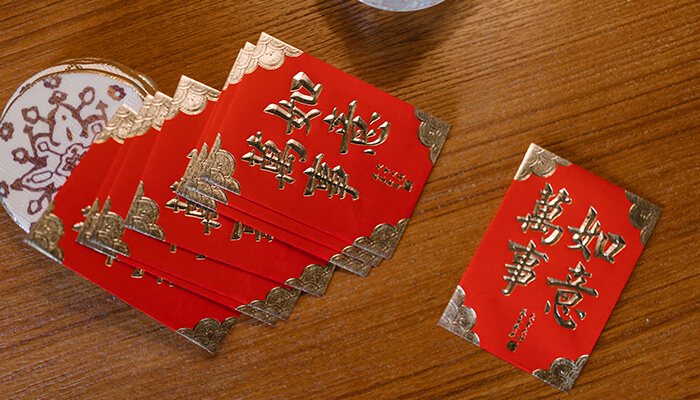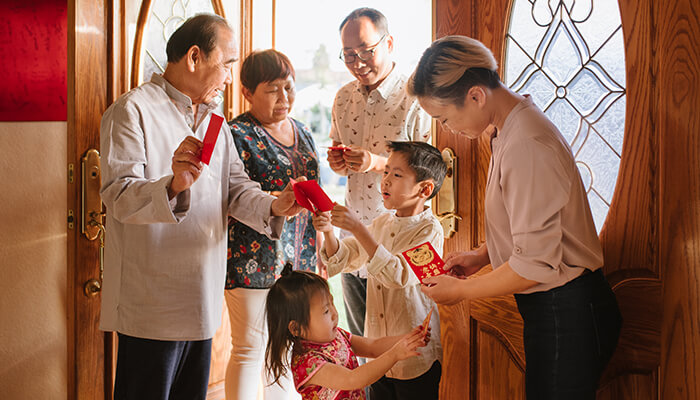Red envelopes denote gift money inserted in a red ornate pocket paper. It is set for giving on birthdays, Chinese New Year, and weddings in China and other Asian countries to send good wishes. The red color symbolizes happiness, energy, and good luck. The traditional red envelopes feature beautiful symbols and Chinese calligraphy, as in Chinese cultures.
10 Interesting Things about the Red Envelopes
1. The red envelope must be in an even number
The red envelope number should bear even numbers. It is a sign of double numbers. The best numbers are 2, 6, and 8, bringing good fortune and luck. Avoid number 4, as it represents death, a homophonic illusion.
2. Unsealed red envelope
The red envelope-giving system is in the spring festival in China and during the New Year. Sealing a red envelope is not a practice, as it means blocking the money source. Sealing the red envelope during the spring festival is not recommended.
3. Only crisp notes
The customs and rules of the red envelope include giving only crisp and clean notes. It is set in a ‘hongbao.’ This is the reason before the New Year; banks receive long queues and people exchange crumpled and old notes to get crisp notes.
4. Giving is a tradition
The tradition of giving red envelopes is a tradition. It is prearranged to give children mainly. However, there is no restriction, and it is set for entire family, friends, colleagues, and relatives. The amount may vary as per each relation as customary. Taking a step ahead is through mobile app development. Parents and grandparents usually get the most; however, casual acquaintances and employees can receive a red envelope.
5. Number 4 to avoid
The amount in the red envelopes should not include the number 4. It means 40 or 400 is also not acceptable. Chinese dislike the ‘four’ pronunciation as it sounds as if the death word is their belief. While the number 8 is their favorite, bringing prosperity and good luck.
6. A sign of good luck
The red envelopes are not strictly for the New Year. The distribution is on many other occasions, as it is a way of sharing blessings and good luck. It is available on an e-commerce site and the parting of money is during weddings and births. The envelope color matters, as white envelopes are exchanged at funerals.
7. Going digitally
Many people in the 21st century are exchanging digital red envelopes, keeping the traditional crisp notes away. These digital envelopes are a result of mobile app development. Real cash transfers are in virtual packets and they directly reach family and friends’ Smartphones. Sending digital hongbao has become a favorite among celebrities.
8. Receiving envelope tradition
Receiving an envelope is a tradition, but they receive it as per the rules. Children kneel and receive the red envelope from older family members. This practice is even now in some parts of China. It is a practice to receive the red envelopes using both hands and strictly avoid opening them right before the present-giver.
9. Cultural and religious boundaries
This china tradition has crossed boundaries. The Islamic holiday in Southeast Asia at Eid-al-Fitr follows the practice of giving a green envelope. The practice of Southeast Asia and the Chinese diaspora is all over the world and is now a huge celebration in New York and London. The red envelopes are global, and even branded items are in this pack.
10. Always stay prepared
People consider staying prepared. It means to have red envelopes always in advance. It is available from the e-commerce site; in case you have to give anyone, you need the red envelope. Every home has envelopes differently marked, so now it is possible to know how much each packet has.




